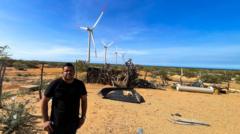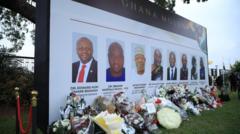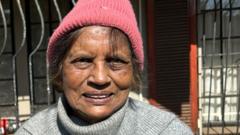As Colombia invests heavily in wind energy, the Wayuu community in La Guajira grapples with the benefits of development against cultural disruptions and community divisions caused by the arrival of wind farms.
Wind Energy in Colombia: Progress or Disruption for Indigenous Wayuu Communities?

Wind Energy in Colombia: Progress or Disruption for Indigenous Wayuu Communities?
La Guajira's shift to renewable energy brings both hope and challenges for the Wayuu indigenous group, raising concerns over cultural impacts and community divisions.
In La Guajira, Colombia, the transformation to renewable energy has arrived with towering wind turbines standing as both symbols of progress and sources of anxiety for the Wayuu indigenous community. Local resident José Luis Iguarán expresses his unease as each day he steps outside to the sight of the Guajira 1 wind farm, which has moved into the space they once occupied. For centuries, the Wayuu have thrived in this region through traditional practices like herding goats and fishing, living in harmony with their environment.
However, the construction of wind farms is quickly reshaping their landscape and daily lives. The sound of the turbines disrupts not only their serene environment but also invades their sacred dreams, which the Wayuu believe are vital for spiritual connections with their ancestors. Nevertheless, Iguarán acknowledges the benefits the wind project has brought, such as improved access to clean water, better roads, and increased housing stability.
Despite these advancements, disagreements rise within the community and amongst local fishermen like Aaron Laguna, who highlight issues such as lack of transparency, inadequate compensation, and cultural disregard in negotiations with energy companies. As Wayuu communities prepare for the development of further wind farms, concerns mount regarding the management of resources they feel are not being appropriately allocated to benefit all members equally.
Authorities and energy companies dismiss the widespread notion that green energy is an unquestionable good. Joanna Barney, an environmental researcher, notes that Colombia lacks a legal framework to effectively evaluate both the environmental and social impacts of wind energy projects on communities. This deficit has led to protests and conflicts between stakeholders trying to negotiate the dual objectives of ecological progress and community welfare.
The criticisms were echoed when a Spanish company, EDP Renováveis, suspended its plans to build additional wind farms in the region after local opposition surged. As energy aspirations continue to collide with local realities, the rift widens between corporate interests and community needs, which contributes to heightened tensions.
Anthropologist Wieldler Guerra emphasizes that energy companies and the Wayuu have fundamentally different viewpoints on the wind. For the Wayuu, the winds embody spirits, meriting respect and understanding, whereas corporate entities view it as a mere resource for generating profit. As a larger-scale wind energy initiative strives to expand, local voices like Laguna's stress their community's historical neglect and their ongoing struggles with basic necessities like clean water and electricity.
Even though projects like AES Colombia's wind farm cluster promise investment and improvements, local residents remain apprehensive. "The most frustrating part is that we won’t even benefit from the energy generated here," Laguna reveals. The electricity is intended for distribution elsewhere, leaving communities reliant on generators while their landscapes are altered by green ambitions.
As wind energy emerges as a cornerstone of Colombia's renewable future, the Wayuu continue to navigate a precarious balance between potential development and the preservation of their cultural identity and rights.



















